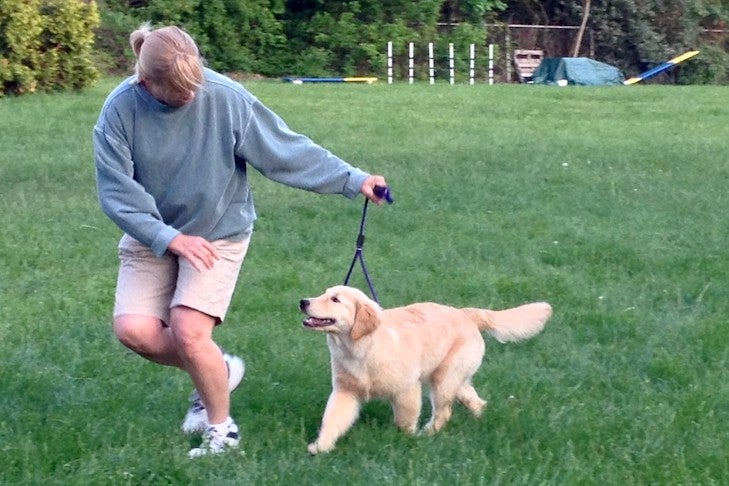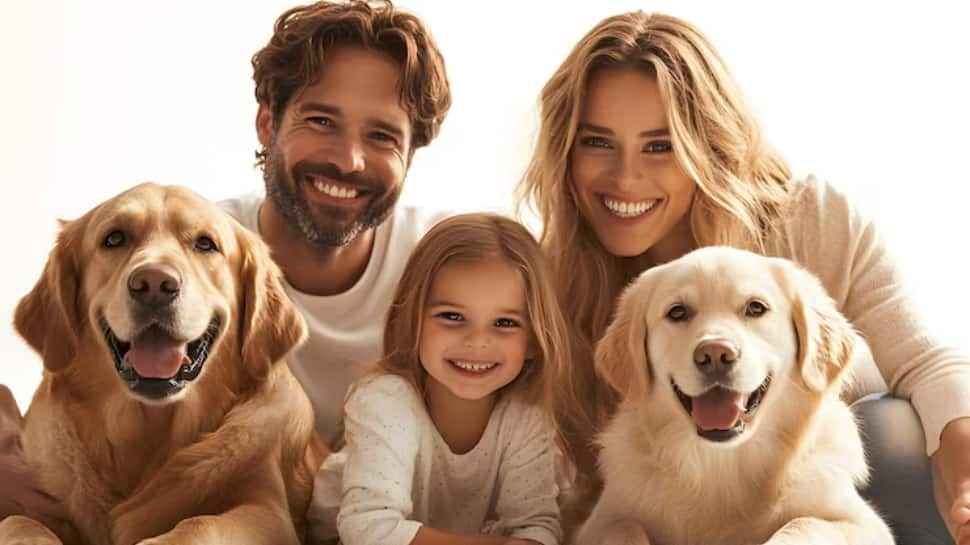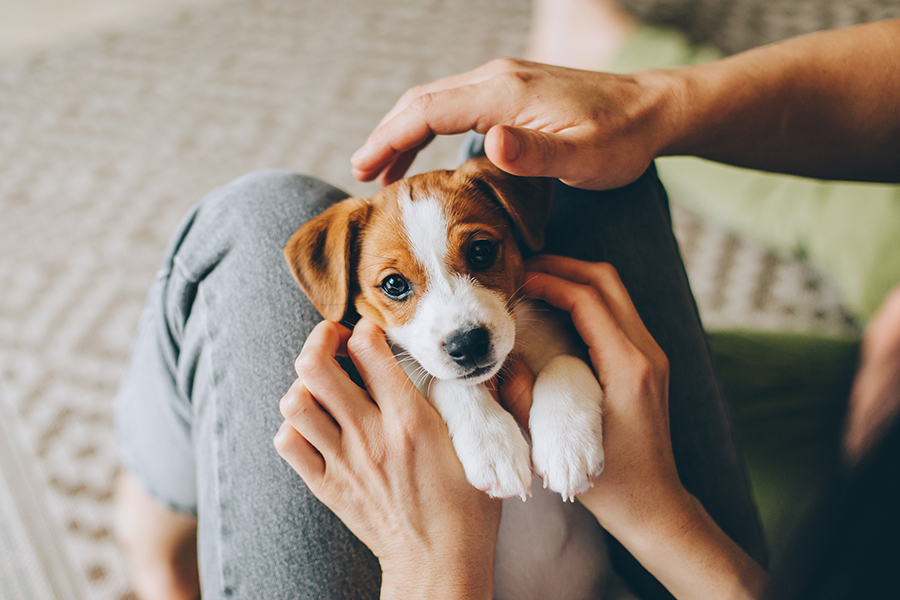Bringing home a new puppy is one of the most exciting moments for any family, but it also comes with responsibilities and preparation. Whether you’re welcoming an energetic breed like golden retriever puppies NJ families love or another furry friend, getting your home and lifestyle ready in advance makes all the difference. From gathering the right supplies to setting up a safe space, careful planning ensures your puppy adjusts smoothly and feels happy from day one.
Puppy-Proof Your Home

Remove Hazards
Puppies are naturally curious and often explore the world by chewing and sniffing. Unfortunately, that curiosity can get them into trouble. Before your puppy sets paw in your home, walk through each room at their eye level and remove anything that could be dangerous.
-
Toxic Plants
Many common household and garden plants, such as lilies, azaleas, tulips, and poinsettias, can be toxic to dogs. Replace them with pet-friendly alternatives or place them well out of reach. -
Electrical Cords and Wires
Puppies love to chew, and exposed cords can be a serious hazard. Use cord protectors, hide wires behind furniture, or block off access to areas with lots of electronics. -
Small Objects and Sharp Items
Everyday items like coins, rubber bands, children’s toys, or sewing needles can be swallowed and cause choking or internal injuries. Make sure these are stored securely. -
Chemicals and Cleaning Products
Household cleaners, detergents, and even certain essential oils can be toxic if ingested. Store them in cabinets or use childproof latches to keep them out of reach.
Create a Safe Space
Just like humans need their own room to relax, puppies benefit from having a safe, designated space. This area becomes their comfort zone—a place where they feel secure and calm.
-
Use Baby Gates
Gates are a simple way to keep your puppy in safe areas while restricting access to places like kitchens, staircases, or bedrooms where hazards may be present. -
Set Up a Crate
A crate serves as both a training tool and a cozy den for your puppy. Choose a size that allows them to stand, turn, and lie down comfortably. Add soft bedding and a favorite toy to make it inviting. -
Designate a Puppy Zone
Consider using a playpen or a sectioned-off area of your home with easy-to-clean flooring. Stock it with food and water bowls, toys, and potty pads if needed. -
Outdoor Safety
If you have a yard, ensure your fencing is secure with no gaps or holes. Remove harmful plants, sharp garden tools, or fertilizers that could harm your puppy.
Gather Essential Supplies

Food and Water Bowls
Your puppy will need their own designated bowls for food and water.
-
Stainless Steel: The best option because it’s durable, chew-proof, and easy to clean. It also doesn’t hold odors like plastic.
-
Plastic Bowls: Lightweight and inexpensive, but they can harbor bacteria and may be chewed by teething puppies.
-
Ceramic Bowls: A good option if they’re heavy enough not to tip over, but they can break if dropped.
High-Quality Puppy Food
Nutrition plays a major role in your puppy’s growth and development.
-
Choose food labeled “complete and balanced” for puppies.
-
Look for high-quality protein sources like chicken, turkey, or salmon.
-
Avoid fillers like corn, soy, and artificial additives.
-
Stick with a consistent brand to avoid stomach upset.
Crate and Bedding
A crate is more than just a place to sleep—it’s a vital tool for house training and creating structure.
-
Select a crate size that allows your puppy to stand, turn, and lie down comfortably.
-
Use a divider if the crate is large, so your puppy doesn’t eliminate in one corner and sleep in another.
-
Add washable bedding that’s soft yet durable (accidents will happen!).
Toys and Chews
Puppies love to play, and toys are essential for mental stimulation and healthy development.
-
Chew Toys: Relieve teething discomfort and protect your furniture.
-
Puzzle Toys: Keep your puppy mentally engaged.
-
Soft Plush Toys: Provide comfort and can help reduce separation anxiety.
Set Up a Puppy Training Routine

House Training Plan
Consistency is the secret to success.
-
Crate Training: Puppies are naturally reluctant to soil their sleeping space, so a crate helps teach bladder control.
-
Frequent Potty Breaks: Take your puppy out after meals, naps, and play sessions.
-
Positive Reinforcement: Praise and reward them immediately when they go outside.
-
Patience: Accidents are normal—never punish, just redirect.
Basic Commands
Teaching commands early ensures your puppy grows into a well-mannered dog.
-
Sit and Stay: Helps control excitement and impulsiveness.
-
Come: Crucial for safety when outdoors.
-
Leash Manners: Prevents pulling and makes walks enjoyable.
-
Leave It/Drop It: Keeps your puppy safe from harmful objects.
Plan for Veterinary Care

Schedule the First Vet Visit
Book your puppy’s first check-up within the first week of bringing them home.
-
Vaccinations: Protect against serious diseases like parvovirus, distemper, and rabies.
-
Deworming: Most puppies are born with worms, so deworming is essential.
-
General Health Check: Your vet will examine your puppy’s heart, lungs, teeth, and overall condition.
Discuss Preventive Care
Beyond the basics, preventive care is vital for long-term health.
-
Flea and Tick Protection: Prevent discomfort and diseases spread by parasites.
-
Heartworm Prevention: A monthly preventive treatment is crucial in many regions.
-
Spaying/Neutering Plans: Talk to your vet about the best timing for your puppy’s breed and size.
Socialization and Early Experiences

Introduce to New People and Pets
Your puppy should meet a variety of people—children, adults, and seniors—in a safe and positive way.
-
Encourage gentle interactions with friends and family.
-
Allow your puppy to observe calmly before approaching strangers.
-
Arrange puppy playdates with fully vaccinated, friendly dogs.
-
Always supervise interactions to ensure your puppy feels safe.
Expose to Different Environments
A puppy that’s comfortable in different settings will handle life’s adventures with ease.
-
Sounds: Gradually introduce vacuum cleaners, doorbells, traffic, and other noises.
-
Surfaces: Let your puppy walk on grass, gravel, hardwood floors, and concrete.
-
Safe Adventures: Carry them to parks, busy streets, and pet-friendly stores before they’re fully vaccinated.
Prepare Your Family for a Puppy

Assign Responsibilities
Everyone should play a role in caring for the puppy.
-
Feeding: Decide who handles meal times to maintain a schedule.
-
Walking: Rotate family members for exercise and bonding.
-
Playtime: Ensure daily play sessions for stimulation.
-
Cleaning: Share duties like potty accidents or grooming.
Set Rules and Boundaries
Clear rules help avoid confusion and speed up training.
-
Decide whether the puppy is allowed on furniture or beds.
-
Establish feeding times and potty break routines.
-
Set boundaries for areas of the house that are off-limits.
-
Use consistent commands so your puppy doesn’t get mixed signals.
Be Ready for the First Week Challenges

Expect Some Accidents
Even with the best house training plan, accidents are part of the process.
-
Clean up messes promptly with enzyme-based cleaners to remove odors.
-
Stick to a consistent potty schedule.
-
Never punish your puppy—redirect them instead.
Sleep Schedule
Your puppy’s first nights may be restless as they adjust to their new environment.
-
Crate Training: Place the crate near your bed so your puppy feels secure.
-
Nighttime Potty Breaks: Young puppies can’t hold their bladder all night; expect to take them out every 3–4 hours.
-
Comfort Items: A soft blanket or toy can help ease separation anxiety.
Conclusion
Bringing home a new puppy is a joyful and life-changing experience, but it requires careful preparation and commitment. From puppy-proofing your home and gathering essential supplies to setting up a training routine, planning veterinary care, and focusing on early socialization, every step plays a role in ensuring a smooth transition. Remember, patience, consistency, and love are the keys to helping your puppy adjust and thrive. Challenges like accidents or sleepless nights are temporary, but the bond you build will last a lifetime.
FAQs
1. What should I buy before bringing a new puppy home?
Essential supplies include food and water bowls, high-quality puppy food, a crate with bedding, chew toys, a collar, a leash, and cleaning supplies for accidents.
2. How do I puppy-proof my home?
Remove toxic plants, secure electrical cords, keep small objects out of reach, and create a safe zone using baby gates or a crate to protect your puppy from hazards.
3. When should I take my puppy to the vet for the first time?
Schedule your puppy’s first vet visit within the first week of bringing them home to start vaccinations, deworming, and a general health check.
4. How often should a puppy go outside to potty?
Young puppies typically need potty breaks every 2–3 hours, as well as after eating, playing, or waking from a nap. Consistency is key to house training.
5. How do I socialize my puppy safely?
Introduce your puppy gradually to new people, friendly pets, different sounds, and environments. Keep interactions positive and always supervise to ensure safety.
